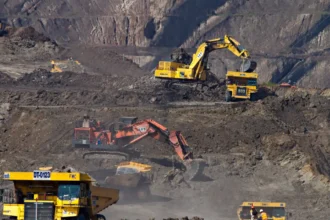Have you ever tried to work when it feels like an oven around you? For millions of women in India who work from home, extreme heat is making it nearly impossible to earn money. According to IndiaSpend, 2024 was the warmest year in India since 1901, with temperatures in Delhi crossing 45°C multiple times in May and June. These conditions are hitting home-based women workers especially hard, affecting both their health and income.
Who These Workers Are
About 17.2 million women in India work from their small homes in crowded neighborhoods. They do many different jobs like stuffing bottles, sewing clothes, making handicrafts, and recycling materials. Some of these workers are women who typically live in hot, cramped spaces with poor air flow. Their work is very important for supporting their families, but the rising temperatures make working conditions unbearable.
How Heat Damages Their Work
When it gets too hot, these women cannot work during the day. Many report their productivity dropping by up to 30%, which means much less money to feed their families. About 43% of home-based workers have seen their income go down because of climate problems. In the handicraft sector alone, extreme heat led to a 40% decrease in earnings as workers struggle to complete orders on time.
- 61% of street vendors lost more than 40% of daily income during extreme heat
- 75% of vendors have no access to cooling near workplaces
- Women face double burden of work and family care in the heat
Daily Struggles in Hot Homes
Imagine trying to do detailed handwork when sweat keeps dripping into your tired eyes. Many women now work very early mornings or late nights to avoid the worst heat. They face serious health problems like dehydration, heatstroke, and even kidney damage from working in high temperatures. The heat also means spending more on drinking water and medicines, further reducing their already small earnings.
“The tin roofs of our homes make it feel like living in a pressure cooker,” explains Sheela Ben from Ahmedabad. With no fans or coolers that work properly, women often wet cloths and put them on their heads just to keep working. Even at night, the walls stay hot, making sleep difficult and leaving them exhausted for the next day’s work.
Finding Ways to Cope
Women are finding creative solutions to this growing problem. Some share work spaces in slightly cooler areas, while others have changed the type of work they do. Shalini Sinha, India representative at WIEGO (an organization supporting informal workers), says these women urgently need formal recognition and better infrastructure. According to The Hindu, experts are now calling for a “right to cool” policy to protect informal workers.
Some helpful changes could include:
- Better housing with proper ventilation
- Community cooling centers
- Financial support during extreme heat periods
Looking Ahead
As climate change makes heat waves worse, the challenges for home-based women workers will only increase. Their struggle shows how climate change affects the most vulnerable first and most severely. The question now is: will you notice these impacts around you, and will government policies finally recognize the right to work in safe temperatures? For millions of women, their livelihoods and well-being depend on finding answers soon.











